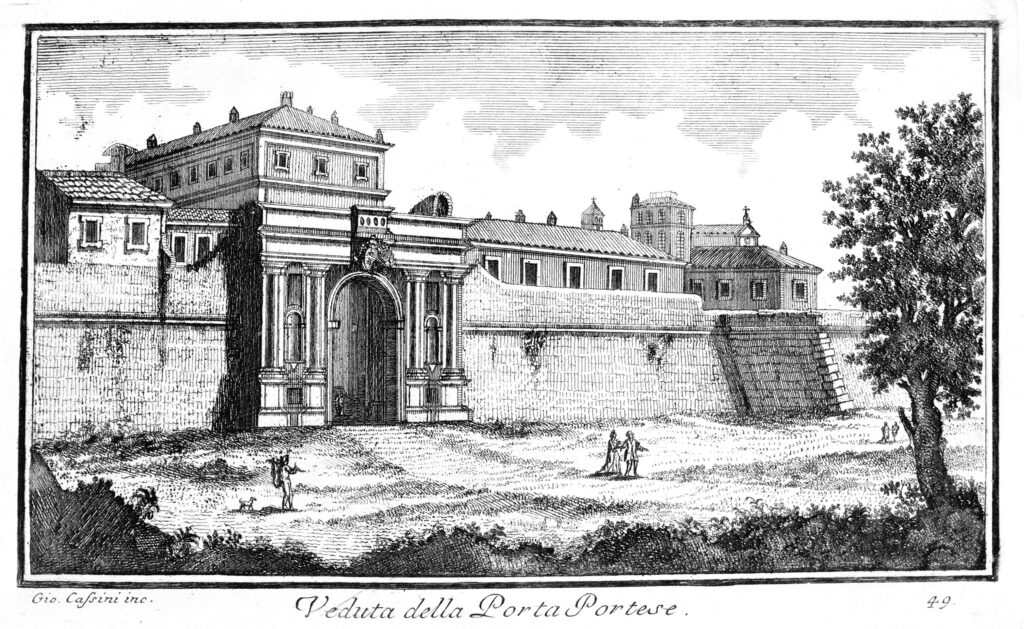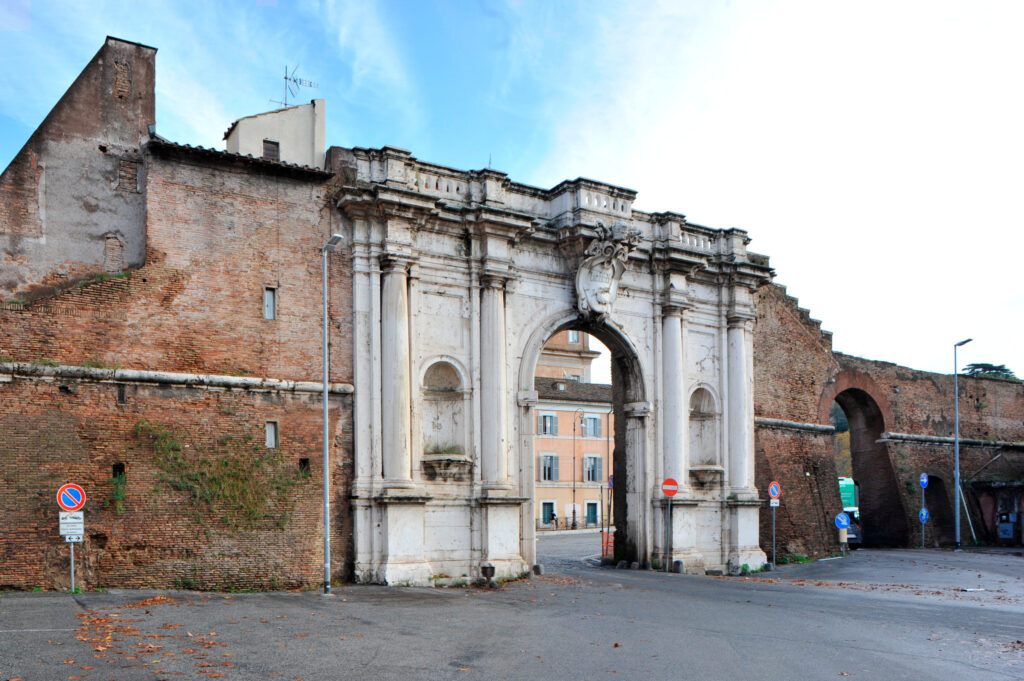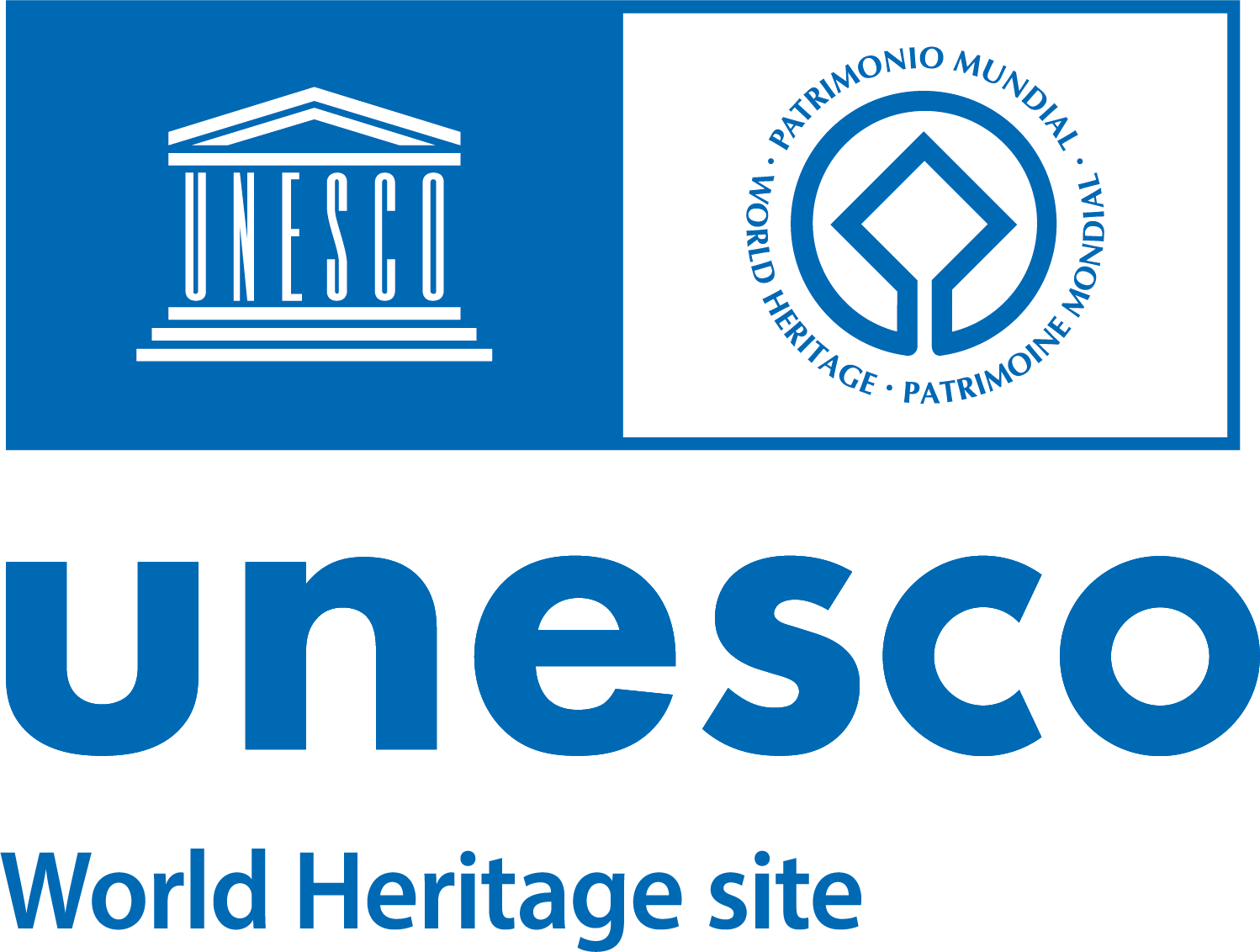Porta Portese, situated a few metres away from the modern-day Sublicio Bridge, was built in 1644 as part of the construction of the Janiculum and Trastevere defensive system during the Wars of Castro, about 500 metres uphill from the ancient Porta Portuensis of the Aurelian Walls. As the Porta Portuensis was excluded from the new course of the walls and thereby lost its defensive purpose, it was demolished in 1643 and its materials reused for the new gate.
Erected during the papacy of Urban VIII under the direction of Cardinal Vincenzo Maculano from Fiorenzuola to a design by Marcantonio De Rossi and his collaborator Giulio Buratti, the bridge was completed under Innocent X. This is attested by the family coat of arms sporting fleur-de-lys and a dove with an olive branch, positioned above the central arch.
The gate, which is without the classic side towers, has a monumental architectural elevation in travertine on the exterior side that reinterprets the model adopted by San Gallo for Porta Santo Spirito: a large central archway flanked by four Doric columns standing on a tall stylobate and by two niches. The projecting parts of the attic storey are topped by unframed parapets that act as the balustrade for the patrol walkway, in place of a more usual embattled walkway.
Due to its proximity to the port of Ripa Grande, this entranceway had a purely commercial function, as is also demonstrated by the presence of service structures such as the papal arsenal and the customs house, still visible today. The gate was also much used by pilgrims arriving by sea; they came up the river and then continued to the Vatican through Trastevere, passing through Porta Settimiana and Porta Santo Spirito.
Due to an increase in traffic, this section of walls was reworked in the first decades of the 20th century; in 1901 the dilapidated gate frames were removed, and in 1922 a project was drawn up to open a new archway. There are currently two passageways next to the gate, one for vehicles and another smaller one for pedestrians and cyclists.




2. G. VASI, Another view of Ripa Grande, looking west, 1786, etching.
3. G. M. CASSINI, Porta Portese, second half of the 18th century, print.
4. Porta Portese, exterior view.


